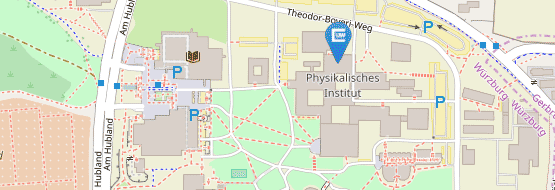TEP Seminar - Lucas Rickert
Plug-&-play quantum light
| Date: | 10/16/2025, 3:00 PM |
| Location: | A034 |
| Speaker: | Lucas Rickert, TU Berlin, Germany |
Plug-&-play quantum light: fiber-pigtailed emission of indistinguishable photons at GHz clock-rates from cavity-enhanced semiconductor quantum dots.
Solid-state quantum light sources (QLS) have attracted considerable industrial and academic research interest due to their prospects in scalable manufacturing of photonic quantum processors, as well as enabling flying qubits for long distance quantum communication networks. A key requirement for a solid-state QLS to be suited for advanced quantum information protocols, such as measurement based photonic quantum computing or device-independent quantum key distribution, is the ability to emit perfectly identical photons. Strongly Purcell-enhanced semiconductor quantum dots (QDs) in photonic cavities are a versatile approach to counter detrimental dephasing-effects of the solid-state environment, and maintain the indistinguishability of emitted photons. On top of physical requirements, quantum light sources should also ascertain possibilities of practical employment, ideally in a plug-and-play fashion to allow their use outside of dedicated laboratory infrastructure in real-world scenarios.
In this contribution, we will consider deterministically fabricated quantum dot - hybrid circular Bragg grating cavities (cBGs) as state-of-the-art quantum light sources for indistinguishable photons. The fabrication of the devices is discussed, starting from numerical simulations for the suitable cavity designs, over the development of the deterministic integration process up to the spectroscopic characterization. The approach yields experimental Purcell enhancements >25, corresponding to <30 ps decay times for the embedded QD emitters. The results are near unity two photon interference visibilities despite present dephasing mechanisms, as well as sustained indistinguishability at elevated temperatures, opening a route to use these cavity-enhanced devices with practical compact cryocoolers. Additionally, the very short decay times allow a significant increase in optical excitation clock-rate up to 1.28 GHz, which can boost the achievable photon transmission rate by more than an order of magnitude compared to previous experiments. Finally, the combination with suitable single mode fibers which are directly coupled to the optimized cavities yield fiber-pigtailed devices, allowing for practical harnessing of indistinguishable photons at increased efficiencies without the need for any further alignment optics.


